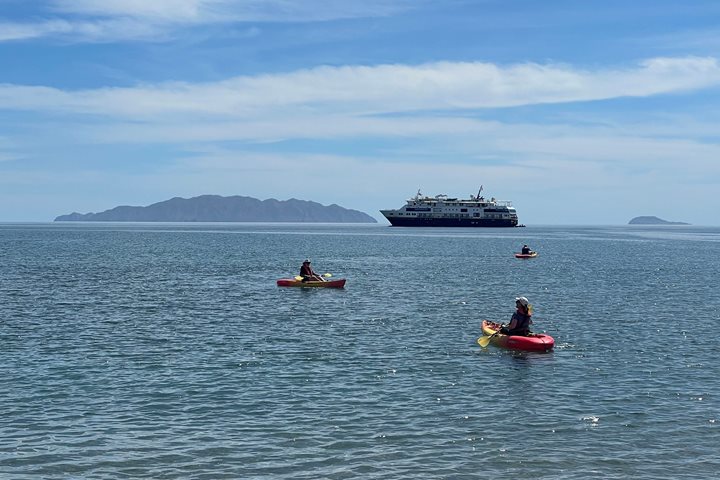A pink horizon streaked and deepening to brilliant reds and yellows sent sunrise spotters racing onto the ship’s bow with cameras in hand. After our journey across the desert to join National Geographic Venture, we made good use of our first morning aboard as we watched for seabirds and marine mammals and explored the beautiful new ship, then later learned about creative digital photography for the wildlife encounters ahead.
Following lunch, we anchored at Bahia Ballenas, just off the coast of the infamous San Ignacio Lagoon. We boarded Zodiacs and headed ashore. The lessening wind brought calmer seas as we headed toward the breakers that guard the entrance to the lagoon. In a few minutes, we were among a pod of common (and highly energetic) dolphins. Blows from California gray whales rose and fell with greater frequency and we were soon near enough to discern mother whales from their month-old calves. We had entered one of the esteemed calving lagoons of Baja California.
California gray whales have the longest migration of any mammal. From here, the mothers and their young will surpass distances of 5,000 miles to reach their feeding grounds north of the Aleutian Island chain.
It was not long before the calves were coming up to investigate our ships, their attentive mothers not far off. Further out, several adult pairs upturned to wave their massive flukes, sure signs of courting behavior. One or two of the babies breached, lobbing themselves up from the sea surface and back down, and at a distance close enough to rock our watercraft. Amazing is one word of a few that comes to mind in such moments. What a delightful first day in the company of California gray whales. Tonight, we dream of the many whale adventures to come over the mornings and afternoons ahead.









